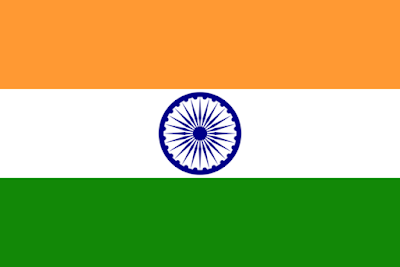 |
| Indian Tricolour - India After Independence (Class 8 History Chapter 10 Notes) |
A Constitution is Written
- Between December 1946 and November 1949, about 300 Indians had a series of meetings and they came up with the current Indian Constitution on 26 January, 1950.
- The major features of Indian Constitutions are 1. adoption of adult franchise, 2. equality before the law to all citizens, regardless of their caste or religious affiliation, and 3. special constitutional rights to the poorest and the most disadvantaged groups of people such as the untouchables, adivasis and women.
- The Constitution sought to balance the power structure between Centre and the State by providing subjects into three lists:
- 1. Union List: Subjects such as taxes, defence and foreign affairs which will be handled by the Centre.
- 2. State List: Subjects such as education and health which will be handled by the State.
- 3. Concurrent List: Subjects such as forests and agriculture which will be handled by both Centre and State.
- Language is another bone of contention among the members of the constituent assembly. There was a strong protest from Non-Hindi speaking members. Henceforth, it was decided to adopt Hindi as one of the official languages and English as the language of court and communication between states and centre.
- Dr. BR Ambedkar was the Chairman of the Drafting Committee and under his leadership, the document was finalized.
How were States formed?
- In 1920s, the Congress promised formation of states on the linguistic lines. But, after seeking the horrors of partition, Congress decided not to divide the nation on linguistic behavior. However, this decision met with fierce opposition. Resulting, to the formation of Andhra Pradesh on the linguistic pattern.
- Amidst the growing demand for states on the basis of linguistic pattern, a States Reorganisation Commission was set up, which submitted its report in 1956. The Commission recommended the formation of new states for Assamese, Bengali, Oriya, Tamil, Malayalam, Kannada and Telugu speakers respectively. Moreover, Hindi speaking North India was also to be divided into several new states.
- In 1960, the bilingual Bomaby was divided into Marathi speaking Maharashtra and Gujarati speaking Gujarat. Similarly, Punjab was divided into Punjabi Speaking Punjab and Hindi speaking Haryana.
Planning for Development
- In 1950, the government set up a Planning Commission in order to design and execute suitable policies for economic development. The mixed economy model with scope for both state and private sector was adopted.
- In 1956, the Second Five Year Plan was formulated which primarily focused on the development of heavy industries and on the building of large dams for irrigation and power supply.
The Nation, Sixty Years On
- On 15 August 2007, India celebrated its sixtieth year as a free nation. In these years, it saw 13 general elections as well as hundreds of local elections. It is known for its free press and independent judiciary system.
- However, it has to cover a long distance. The country is still divided on the caste lines. There is still discrimination against women and low caste people.
